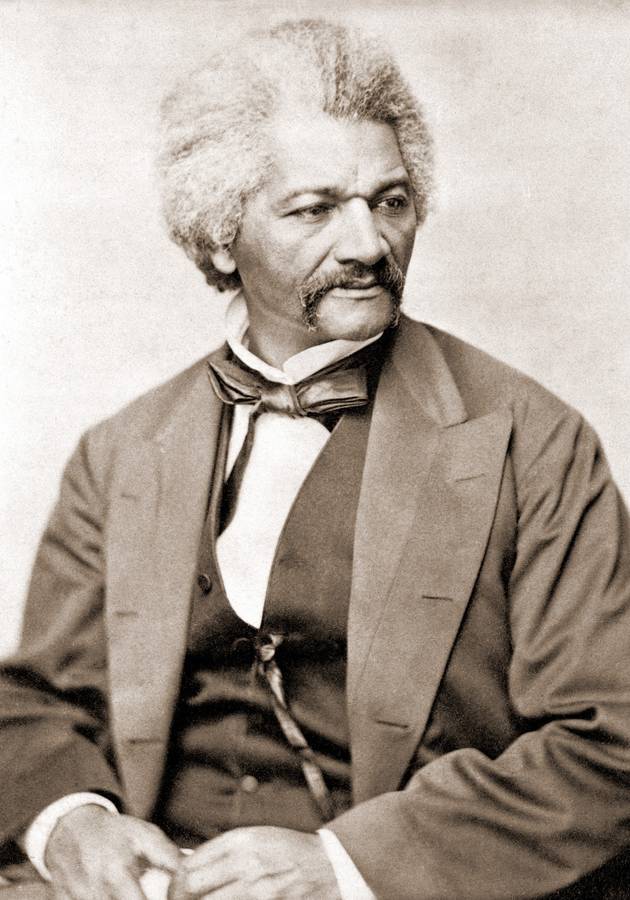Are you working in sales and struggling to gain new customers? Or maybe you are the CEO of a company and are wondering how to effectively scale your business for growth? Mike Weinberg wrote “New Sales. Simplified.” as an easy-to-follow handbook for salespeople and businesses of all sizes wanting to increase their customer base. So, get ready to learn how to excel at selling!
Sales are simple
Mike Weinberg is an experienced salesman. After he worked for WalMart for a couple of years, he got the opportunity to work for a small, family-run plastics manufacturer in 1993. He was naively enthusiastic about leading the sales effort and, together with his colleague, he printed out maps of the U.S. that they dotted with color-coded pins: one color for existing customers, one for potential customers, and one for additional prospects.
Then, Weinberg put together a sales plan based on his conversations with the plant manager and from looking at the sales reports, and went out to attack the market. His company was small compared to its competitors, and their prices were often higher. So, Weinberg’s job was tough. But that did not deter him from flying all across the U.S. and visiting every prospective and existing customer it made sense to see.
In every conversation, he made his best effort to position his company as a partner that was easier to work with and more flexible. He would also ask plenty of questions and tour their facilities. In repeating this tactic over and over again, Weinberg managed to double the revenues of a 40-year-old business in just three years.
Weinberg believes that sales are simple: “In sales, our incredibly important, incredibly straightforward job is to connect with these customers and prospective customers to determine if our solutions will meet their needs.” And yet, very few salespeople know how to prospect for new business.
This comes down to several reasons: Veteran salespeople may have grown used to bygone times when it was sufficient to operate in reactive mode in order to reach sales targets. Some salespeople had been carried along with the company’s success and never had to worry about creating new sales opportunities.
Young salespeople nowadays have not been taught the skills of how to prospect for new business. Clearly, it is time for a simple approach on how to gain more customers and grow your business!
The New Sales Driver
Following years of experience as a salesperson, Weinberg eventually developed a simple and easy plan of action that salespeople can follow in order to grow their business: The New Sales Driver. Here are the three steps for gaining new customers as a salesperson:
- Select targets.
- Create and deploy weapons.
- Plan and execute the attack.
In order to succeed at sales, you will, of course, need to have a clear picture of the customers you are targeting. Then, to “attack” your new customers, you will need to employ certain weapons, such as your sales skills, in order to convince prospective customers.
Finally, when you have come up with a list of prospective customers and you have prepared your weaponry, you need to get out there and actually approach people. It is easy to theorize about selling, but to actually make a difference you will need to get out there and do the work.
According to Weinberg, “If an individual salesperson or a company’s sales team is not successfully acquiring new business, the cause of the failure can be found in one of the three components of the New Sales Driver.” Either there has been a poor target selection or a lack of focus on selected targets. Or, the salespeople have not perfected the use of their weapons. Finally, the cause of failure might lie in inadequate planning or a lack of execution. Often, it is more than one of these issues that sales teams struggle with.
If your business has a clear strategy and a defined place in the market, and there is demand for what you are offering and you are working with at least average sales talent, it is time to overhaul your sales team and introduce the New Sales Driver to grow your business.
Selecting targets
When you want to acquire new business, there are a few crucial questions you need to answer. Where is your business going to come from? Who should you be pursuing? In order to answer these questions, you need to create a list of targets – prospective customers that could be interested in your product.
Working in sales is repetitive. You go through the motions every day, work the process, and work the math. Once you have found your success formula as a salesperson, all you have to do is to replicate it every day, over and over again. Choosing your targets - the accounts you will proactively focus on - provides you with the unique opportunity to step away from the daily grind.
Instead, you get to ask the big picture questions such as “Who are my best customers?” or, “Are they a particular size (in terms of revenue, for example) or in certain vertical markets or niches where we have a higher rate of success? Where can I find potential customers with similar profiles?” Since these questions are relevant to the entire company and not just the salesperson, senior leadership should always be involved in making these decisions. A strategic alignment between the business and the sales effort is essential for successful sales.
Once you have answered these questions, start to compile a target list. This list should be finite, focused, written, and workable to maximize your productivity. Your list should be finite so that you can methodically concentrate on a limited number of accounts. Persistent salespeople get recognized over time, and that is how you get in and start building relationships.
For similar reasons, your list should be focused. The author writes: “Periods of greatest success seem to result from a laser-focused sales effort. Focusing in on a vertical market or certain type of account yields many benefits.” Focusing on one market also provides you with similar case studies that show your credibility and worth and help you build a name for yourself.
Always write your target list down. Make this a concise one-page list that you always keep handy. Finally, make sure your list is workable. What that means for you depends on the business sector you are in, but a good rule of thumb is to have your target list limited to a certain period of time.
To create such a list, start by segmenting your existing accounts. As a salesperson, your time is your most valuable asset, so you should always endeavor to focus on those accounts that are going to give you the largest revenue growth. By sorting your accounts into categories such as “largest” or “most growable” you can easily identify which accounts you should prioritize.
To identify new customers, you can turn to sources such as LinkedIn or even trade shows and industry associations.
Your most important sales weapon
Once you have created your target list, it is time to have a look at your sales weapons. What resources do you have to convince someone to buy from you? Sales weapons include all the traditional methods of marketing letters, emails, telephone calls, presentations, and LinkedIn profiles. But by far the most important of them all is your sales story.
Your sales story is how you sell the product and your company. Weinberg writes: “It’s our best opportunity to set ourselves apart from the competition; to beautifully package our offering; to gain the prospect’s attention; and to position ourselves as experts, value creators, and problem solvers.” Storytelling is an important life skill, and people are drawn to those who are gifted at telling stories.
Sadly, most companies struggle with telling a good story. A common problem Weinberg observed was that most companies lack an effective story. Often, a business’ story does not even align with the product they are trying to sell! This of course is extremely uncomfortable for salespeople on the front lines and often one of the biggest deterrents in prospecting for new business.
A good sales story is consistent, real, and honest. It should not take longer than a minute or two to tell, and should be just long enough that the prospect’s interest is piqued. Most importantly, the sales story should never be about you, but about what you can do for the customer.
Just think about it. Are you interested in someone who consistently only speaks about himself and how awesome he is? When you meet someone like that, do you pay attention to every single word they utter? Or does your attention wander quickly? That is exactly how prospective customers feel when you talk too much about yourself.
A great example for a good sales story is that of Charles Revson of Revlon, whose slogan was, “We don’t sell cosmetics, we sell hope.” See your sales story as the shiny gift wrap on the product you offer.
Planning and executing the attack
Now that you have identified your target and honed your sales story, it is time to launch the attack. Get out there and start talking to prospective customers! Weinberg states that no one defaults to prospecting. It is a scary step for many salespeople, so all the more reason to be proactive and develop a plan for how to gain new customers.
First of all, since you are likely not eager to start your prospecting, you will have to do some time blocking on your calendar. Make time dedicated to gaining new customers – and put it in your calendar. Most importantly, don’t just block the time off, but actually keep your appointments, all the way through to the end.
If you are wondering how much time you should give yourself per time slot, make it at least 90 minutes. You will need some time to get into a flow and become productive. Try not to have blocks of time that are longer than three hours, since after that, you will lose your ability to stay focused.
Second, you need to make the math work. Let’s be honest: sales is a numbers game, and as a salesperson you get paid based on how much growth you generate. So, collect the data. Look at your sales and track them back through the process of selling. That way, you can generate your own data sets and gain insights on what it takes to seal a deal.
For example, you will probably realize that one in three proposals wins you a closed deal, or that two-thirds of your customers move from first meetings to the next stage. Having this data available to you allows you to tweak your sales process and to repeat successful strategies.
In order to do all this, write a personal annual business plan. By putting your goals in writing, you will have an easier time staying on track for success! In your business plan, you should include five key components:
- Goals. What are you going to achieve?
- Strategies. How are you going to do it?
- Actions. Commit to specific sales activities.
- Obstacles. What’s in the way?
- Personal Development. How are you planning to grow this year?
Final Notes
Sales do not have to be difficult. All you need to do is to identify prospective new customers, and then use the New Sales Driver to gain them as customers for your business. Make sure you know what kind of accounts you are targeting, and that you have a compelling sales story to tell. Finally, always stick to your business plan in order to ensure consistent growth.
12min Tip
Think about your sales story. Is it concise, honest, and compelling?





























